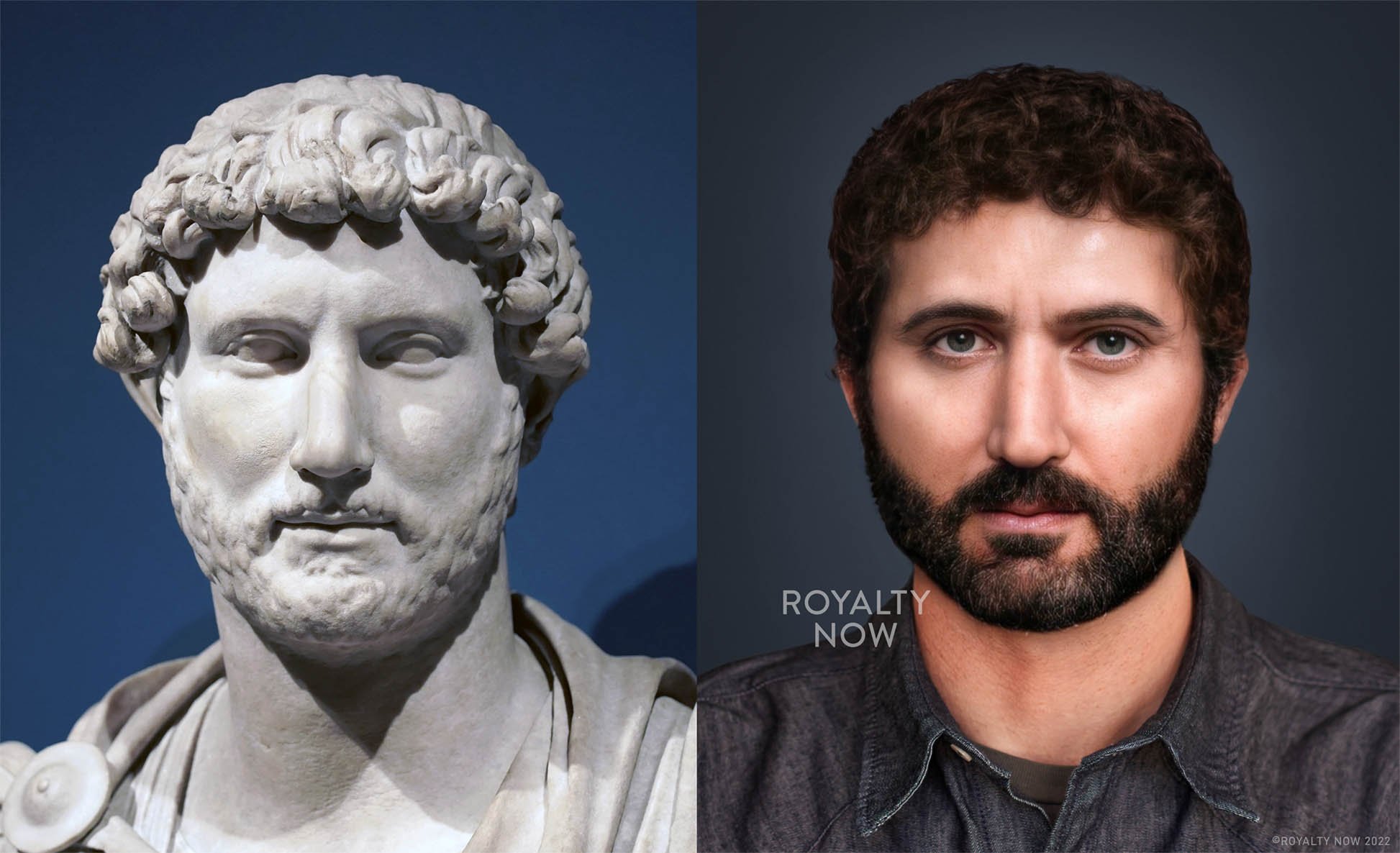Emperor Hadrian Brought to Life From his Statue
A modern interpretation of Hadrian.
Emperor Hadrian is a really fascinating subject I’ve been meaning to get to for a while. Emperor Hadrian was born in 76 AD, in Italica, which was a Roman province in Spain. He was only the second Emperor to be from a foreign territory. Hadrian rose to prominence in Rome, and was the favorite of Trajan and set to be the next in line for the Emperorship. He was quickly married to Trajan’s grand-niece Vibia Sabina. However, his treatment of her was quite icy. Trajan’s favor of Hadrian kind of seems to sour at this point, and the succession seems back up for grabs. Hadrian’s icy treatment of his wife can now be explained by the fact that scholars almost all agree that he was a gay man. Hadrian famously had a lover named Antinous, who died tragically young and was even made a Deity. Hadrian and Antinous had a massive age gap, and while this was very common and socially acceptable at the time (an older man would generally take an interest in the education of a young man and help him become an accomplished adult), it’s hard not to see this as predatory through our modern lens. Hadrian did accomplish a lot during his time as Emperor - he built the famous “Hadrian’s Wall” - which he never even laid eyes on by the way - and completed several other large building projects. Unfortunately after Antinous’ death, he went off the rails a bit. While he previously engaged in peaceful policies, Hadrian put down a Jewish revolt very violently, engaging in an outright war. Hadrian did transcend the title of a “Good Emperor” - with many shades of gray existing during his time as ruler.
We don’t know too much about Hadrian’s hair or eye color, but it’s possible he had brown hair and gray eyes according to pigments remaining on some statues. There were dozens of images of Hadrian made, and they all look remarkably consistent with each other. It’s easy to see what his face really looked like. He probably did have curly hair, but Hadrian was really fond of Greek culture, and the busts of him have an exaggerated curly head of hair and beard as an homage to his favorite Greek philosophers.
Left image: Marble bust of Hadrian from Tivoli 125-130 AD. From the British Museum. Photo by TimeTravelRome.


